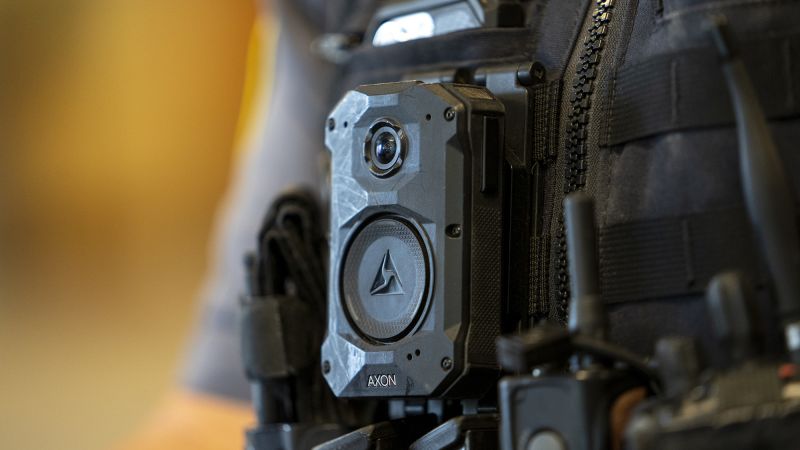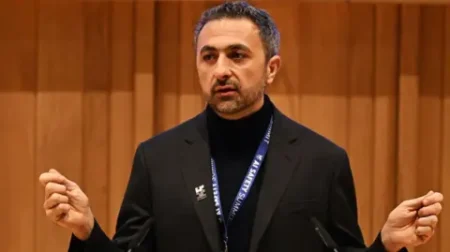The integration of artificial intelligence (AI) into law enforcement has stirred significant interest and concern, particularly with tools like Draft One, which generates police reports. Officer Scott Brittingham from the Fort Collins, Colorado, police department shared insights about his transition to using this advanced technology. After spending nine years crafting detailed reports post-service calls, Brittingham found Draft One intriguing when it was introduced to speed up report writing. Previously taking him up to 45 minutes, with Draft One, he now spends only 10. This dramatic reduction allows him to take on more calls and focus on proactive crime prevention.
Draft One, developed by Axon, a technology firm that produces tasers and body cameras, exemplifies how AI can reshape policing workflows. As reported, it has quickly become the fastest growing product for Axon since its debut last year. Such trends highlight a shifting landscape within law enforcement agencies across the United States embracing similar technologies, including competitors like Truleo with its Field Notes software. The impact is profound: reports serve as foundational documents in the criminal justice system, informing the actions of officers, prosecutors, and judges, thereby affecting the outcomes of legal proceedings.
Andrew Guthrie Ferguson, a law professor at American University, articulates the dual role of police reports as both documentation and accountability for law enforcement actions. Pioneers of Draft One argue that AI can enhance accuracy in reporting, thus streamlining the workflow while preserving detailed, essential narratives of events. Still, critics point out the potential for bias or factual inaccuracies stemming from AI reporting processes, raising serious issues about fairness and transparency that underscore the need for scrutiny in how these technologies are implemented.
The rise of AI in police reporting comes at a time when various law enforcement practices are under intense evaluation, particularly regarding past issues with technologies like facial recognition that led to wrongful arrests. As Ferguson indicates, the pursuit of improvements with technology must be balanced against the underlying systemic problems within justice processes that can be exacerbated by error-prone systems.
Operationally, Draft One works by allowing officers to initiate a report based on transcripts from body camera footage right after incidents occur. However, this transition to AI drafting raises critical concerns about the accuracy and integrity of the reports generated. Designed with fill-in-the-blank features for officers to complete, it emphasizes that the final report remains the officer’s responsibility. Axon aims to mitigate potential hallucinations or inaccuracies by incorporating user feedback and quality controls from various stakeholders.
The inception of Draft One was largely catalyzed by staffing shortages within police departments, highlighted by a 2024 survey from the International Association of Chiefs of Police indicating that most agencies are operating below their authorized staffing levels. To enhance operational efficiency, tools that cut down time spent on administrative tasks are highly sought after. Although specifics about the number of departments using Draft One remain undisclosed, its adoption spans multiple locations, indicating a expansive potential reach throughout the country.
Feedback from law enforcement has generally been positive, with officers experiencing significant reductions in report completion times. For instance, Fort Collins Police Sergeant Bob Younger noted an impressive 70% decrease in time spent on writing reports after employing Draft One. Nonetheless, not all reactions have been uniformly favorable. The King County prosecutor’s office in Washington recently decided against accepting AI-assisted reports, citing concerns over potential errors.
In addition to accuracy, the transparency of AI-generated documents comes under scrutiny. Some departments suppress disclaimers that identify AI involvement in report drafting, thus raising ethical questions regarding the knowledge of defendants about the origins of their case documentation. Conversely, laws in places like Utah mandate full transparency, necessitating that AI assistance be disclosed in police reports.
Despite the criticisms and challenges that accompany the integration of AI in law enforcement, advocates like Brittingham emphasize that these tools are not replacements for officers but rather enhancements designed to assist in the crucial task of writing comprehensive reports. Ultimately, the effectiveness of Draft One as a law enforcement resource will depend on the commitment of its users to wield it responsibly, allowing for both efficiency and accountability to coexist within the justice system. The forward march of AI in policing promises opportunities for better service, but it must continue to be approached with caution and ethical consideration.










